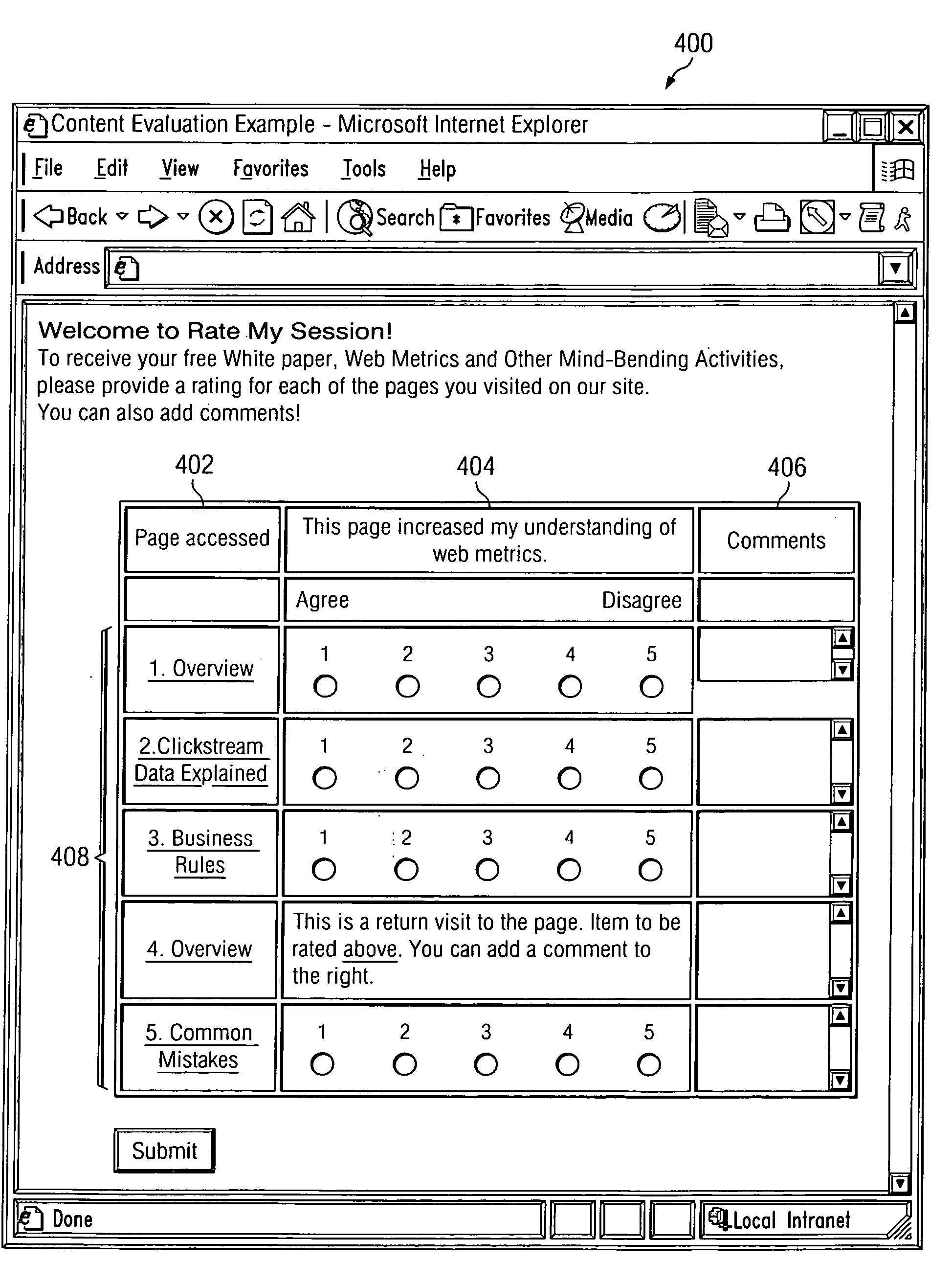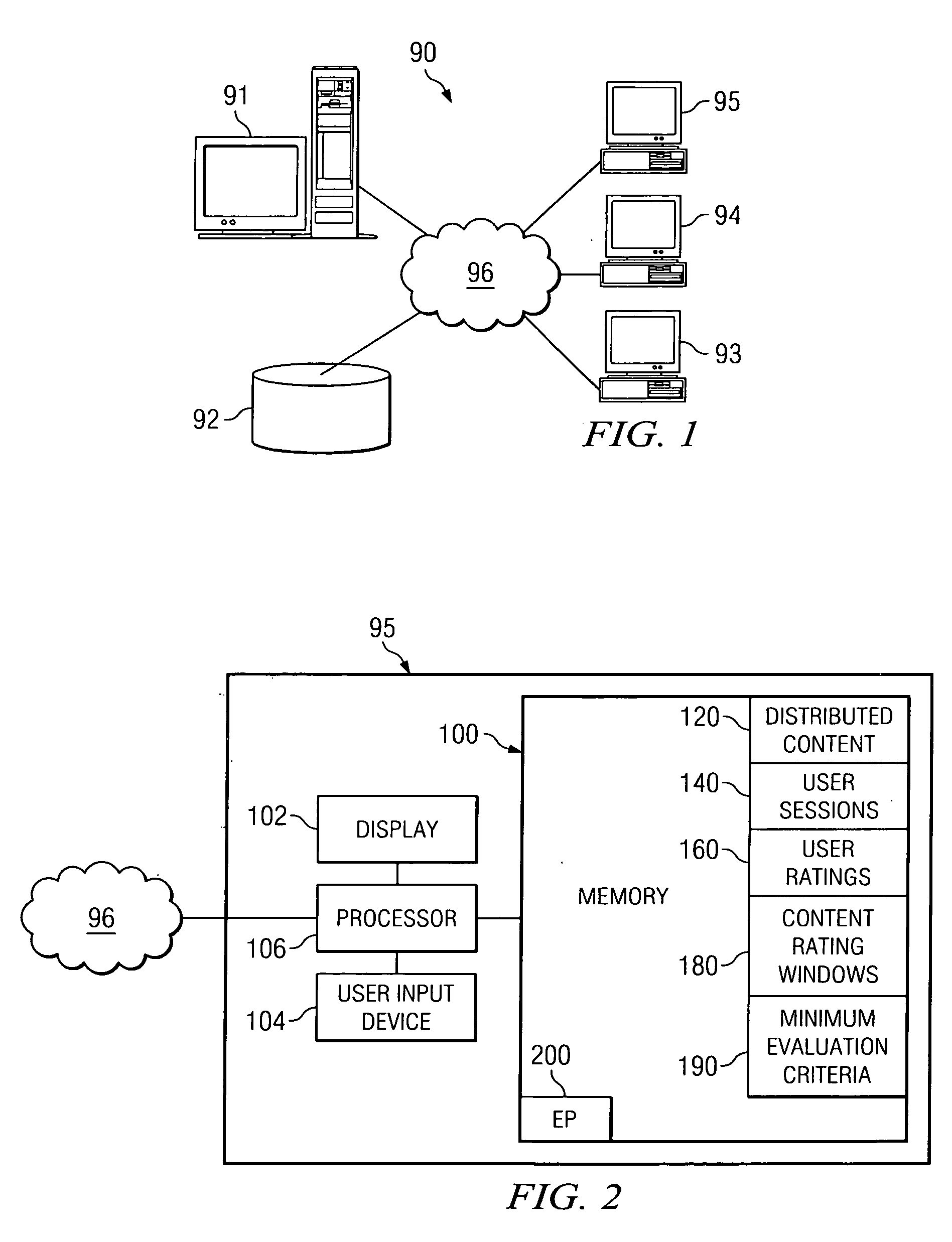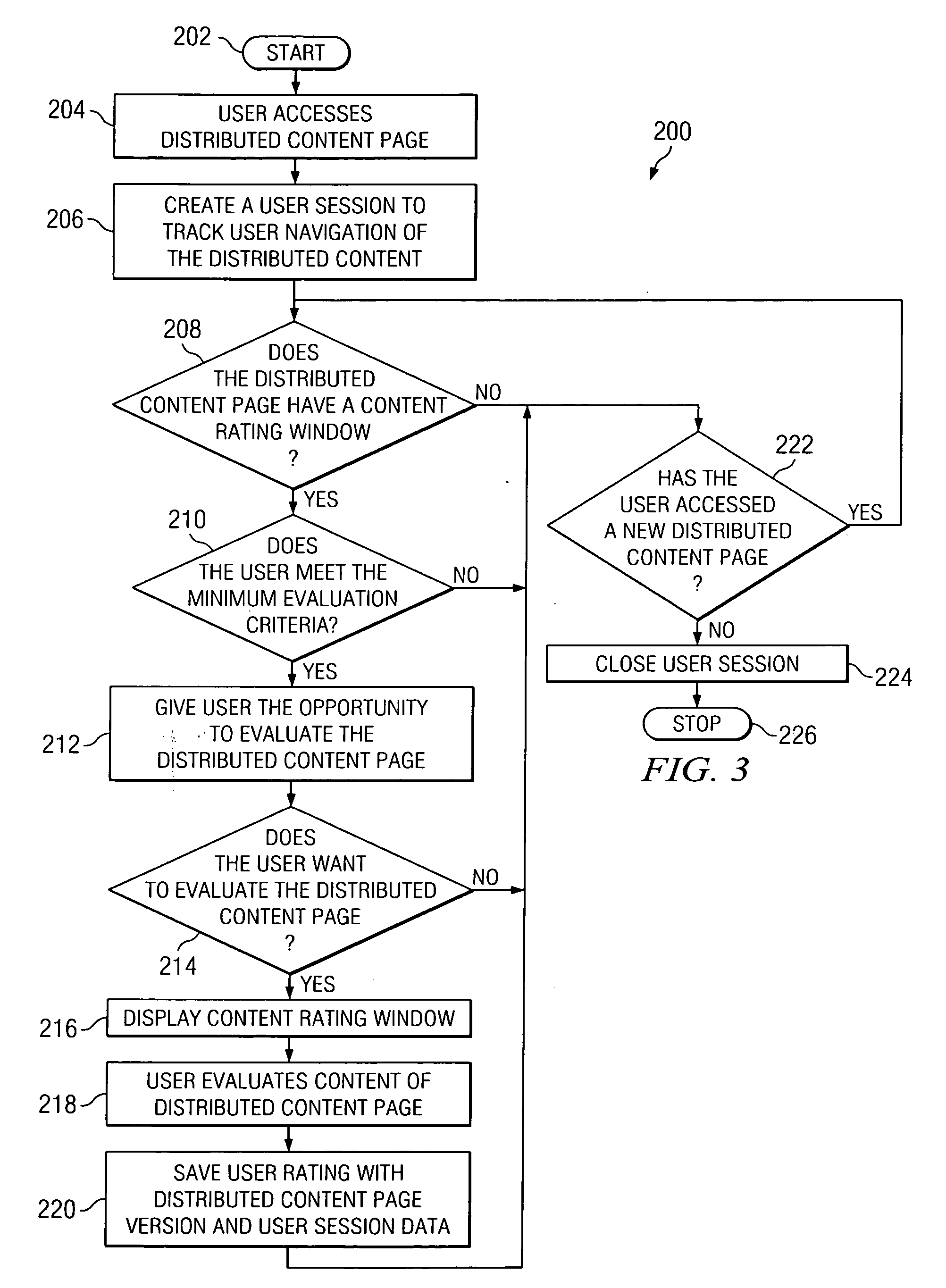Method for session based user evaluation of distributed content
a distributed content and user evaluation technology, applied in the field of gathering distributed content evaluations, can solve the problems of difficult to obtain reliable user feedback regarding the distributed content pages, difficult to convey distributed content user feedback consistently, and difficult to obtain distributed content user feedback
- Summary
- Abstract
- Description
- Claims
- Application Information
AI Technical Summary
Benefits of technology
Problems solved by technology
Method used
Image
Examples
Embodiment Construction
[0015] As used herein, the term “computer” shall mean a machine having a processor, a memory, and an operating system, capable of interaction with a user or other computer, and shall include without limitation desktop computers, notebook computers, tablet computers, personal digital assistants (PDAs), servers, handheld computers, and similar devices.
[0016] As used herein, the term “content rating window” shall mean a graphical user interface (GUI) that allows a user to rate a distributed content page.
[0017] As used herein, the term “distributed content” shall mean electronic content distributed to a plurality of end users over a computer network. Examples of distributed content include webpages and websites, dynamically generated content, and cellular telephones using wireless application protocol (WAP) to serve content on the cellular telephone screen. Other examples of distributed content are known to persons of ordinary skill in the art.
[0018] As used herein, the term “distrib...
PUM
 Login to View More
Login to View More Abstract
Description
Claims
Application Information
 Login to View More
Login to View More - R&D
- Intellectual Property
- Life Sciences
- Materials
- Tech Scout
- Unparalleled Data Quality
- Higher Quality Content
- 60% Fewer Hallucinations
Browse by: Latest US Patents, China's latest patents, Technical Efficacy Thesaurus, Application Domain, Technology Topic, Popular Technical Reports.
© 2025 PatSnap. All rights reserved.Legal|Privacy policy|Modern Slavery Act Transparency Statement|Sitemap|About US| Contact US: help@patsnap.com



